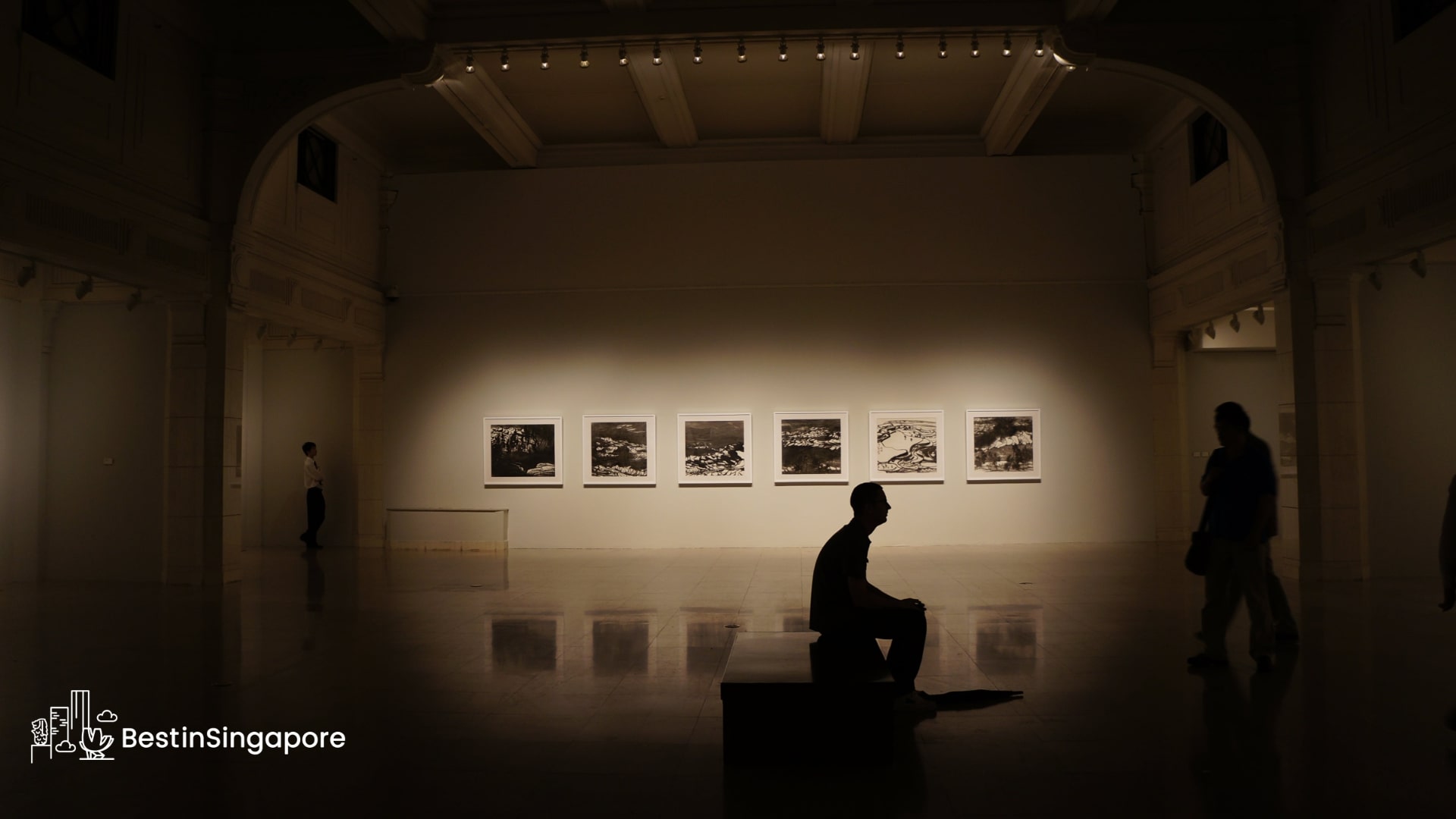The Story of a City: A Guide to the Singapore City Gallery
The city of Singapore is now a global city, and (if you ask me!) it’s considered one of the best cities to live in. But did you know that before all of this, Singapore was once covered in rainforest and eventually became a fishing village?
Indeed, Singapore has a fascinating history, and fortunately, you can learn how this city came to be by visiting the Singapore City Gallery! This gallery has city models and exhibits, giving you an in-depth look at the city’s development throughout the years.
If you’re planning to stop by soon, use this article as your guide.
Things to Know
Address: 45 Maxwell Road The URA Centre, Singapore 069118
Operating Hours:
- Monday to Saturday—9 am to 5 pm
- Closed on Sundays and public holidays
Admission Fee: Free
Contact Number: +6562216666
Website
History and Background
Formerly known as URA Gallery, the Singapore City Gallery documents the city’s history. It documents how the city transformed from its humble roots to being one of the best cities in Asia; plans for the city are laid out here as well.
This gallery cost S$4.2 million to build, and it was opened to the public on January 27, 1999. It was originally projected to just have 36,000 visitors a year, but after a series of renovations, it’s become a tourist destination with 150,000 visitors annually.
How to Get There
MRT: If you prefer riding the MRT, you must take the train to the Chinatown station or the Tanjong Pagar station. Then, walk to the gallery, which should take only a few minutes.
Bus: Riding the bus is another mode of public transportation that you can take. Simply ride bus service 10, 143, 145, 147, 166, or 80; the nearest bus stops are the one on Neil Road and near the Capital Tower.
Car: If you’re driving, there’s a car park within the gallery’s premises. But you do have to apply to use any of the parking lots, so keep that in mind.
Best Time to Visit
Personally, I think the best time to visit the Singapore City Gallery is during weekdays, preferably in the morning. This is because the gallery won’t have as many visitors then, allowing you to explore the exhibits in relative peace.
Gallery Etiquette
To ensure that your time at the Singapore City Gallery is seamless, abide by the following rules:
- Be respectful. You’re not the only one visiting the gallery, so observe silence while exploring. Avoid speaking loudly, especially in exhibitions with audio presentations.
- If you’re traveling with children, ensure they’re not running all over the place.
- Avoid touching any of the city models.
- If you want to take pictures, turn off the flash. Using tripods and selfie sticks is also not allowed.
- Bringing food and drinks to the second and third floors is prohibited.
- You can bring strollers and luggage into the gallery. Just be considerate when it comes to the other visitors.
What to Expect
First Floor—Island-Wide Model
The first thing you’ll see when you step inside the Singapore City Gallery is the Island-Wide Model. As you can guess from the name, this model is the entirety of Singapore island—and it is so massive!
This model is made using the power of 3D printing technology, so the topography and buildings are very much detailed. This model is also accompanied by a three-minute projection, showing the different planning strategies and the city’s key landmarks.
It’s interesting to see Singapore displayed like this. It lets you give an insight into which towns the government has urbanized; in fact, you’ll realize that there have been efforts to create urban areas like the city center in the far reaches of the country!
Second Floor—Central Area Model
While the first floor depicts the entirety of Singapore, the second floor features the Central Area Model—in other words, the city center itself. The architectural model is 11 meters by 10 meters and made from balsa wood and acrylic; its scale is 1:400.
What blows me away about this model is that it shows the city as it is now, and the level of detail is just insane. It really feels like the city has been scaled down, and now you’re towering over everything like a giant; now, I see what it’s like to be Godzilla!
Another fun thing I like to do here is to try and pinpoint where I am on the map and how far one place is from another. I’m not the best in geography, but it’s still fun getting a bird’s eye view of places I’ve been to.
If you want an even better bird’s eye view, head up to the third floor because you can look down on the model from there. That perspective will make you feel like you’re watching the city from an airplane high up in the sky.
Different Exhibits

Aside from the hyper-realistic architectural models of Singapore, the Singapore City Gallery houses several different exhibits as well. Currently, there are around 10 thematic areas and over 50 audiovisual and interactive exhibits available.
These exhibits touch on different topics regarding urban planning, such as sustainable development, the preservation of historical buildings, and more. So, checking out a few exhibits is recommended because you’ll learn much more about the city.
The following are some of my favorite exhibits inside the gallery.
Singapore, Vibrant City
Singapore, Vibrant City is one of the first exhibits you’ll see when you arrive at the gallery. And it really leaves such an impression because it’s a 12-meter-long, 270-degree panoramic video!
This video features snapshots of what living in Singapore is like. You’ll see people going about their day-to-day lives and visiting some of the city’s most renowned destinations, like Marina Bay Sands.
Long story short, this exhibit celebrates the very best of Singapore.
The Singapore Timeline
The Singapore Timeline is an easily overlooked exhibit simply because it doesn’t have the pizzazz that other exhibits have. That said, it’s still worth checking out because it has a wealth of information.
As the name suggests, this gallery features a timeline of the country—how things began and how Singapore stands today. The timeline is depicted by a row of pictures with few informational texts, so feel free to read everything.
How Our City Works
Simply put, How Our City Works is an exhibit that shows you the different urban systems that keep Singapore going. You’ll also learn more about the hidden infrastructural networks that help meet the daily needs of citizens.
What I love about this exhibit is that all this information isn’t just showcased in a boring way. Instead, it’s an immersive show that you can interact with! Simply touch a figure on the screen, and an informational video pops up.
Because of this, even children can have fun. Who says learning has to be dull and tedious?
The Touchstones of Planning
The Touchstones of Planning is a juxtaposition of Singapore, Vibrant City. While the latter celebrates the city’s innovations, Touchstones shows you all the problems that Singapore’s planners encountered.
These problems include small land size, changing and conflicting aspirations, economic support, and more.
This exhibit has four interactive screens, and each is loaded with information. So, be sure to take your time when browsing through the exhibit.
Smart Nation CityScape
Smart Nation CityScape is a new exhibition that’s integrated with the gallery, and its main goal is to show the different ways that digital technology powers the city.
This exhibition is on the second floor with the Central Area Model. It has an interactive screen, so you don’t have to be overwhelmed with many pieces of information at once; instead, you can space out the topics for better understanding.
The screen also provides a visual, so it’s easy to understand the concepts you’re reading about.
Mapping Singapore
Another way to get a glimpse into how a city has developed throughout the years is by going through the maps, both old and present. That’s exactly the goal of Mapping Singapore, and it’s such an insightful exhibit.
In this exhibit, you can access 40 maps of Singapore. I recommend you go through every one of them and see how the roads and land areas have grown.
There are also four videos that provide more context for the early maps.
A Brush with History
A Brush of History is an exhibit dedicated to Singapore’s historic landmarks. As you probably already know, this nation has neighborhoods that have been around for some time; examples include Little India, Chinatown, and Kampong Glam.
These neighborhoods have their own cultural monuments and historic districts, and the government has worked hard to restore these places while retaining their original character.
That’s what the exhibit aims to show you: a slideshow of familiar historical landmarks and their restoration efforts to keep them functional in modern society.
Interactive Games
Informational exhibits aren’t the only fun things available in this gallery; you can also engage in interactive games.
My favorite games are Alternative Realities and Shaping Singapore because they let you use your imagination and create your own city. You can even reshape Marina Bay if you want—maybe add a fourth tower to Marina Bay Sands!
Another game you can play is SingCity, which is more of a role-playing game. In this one, you’re a citizen in a fictional city; the city has a traffic and air pollution problem, and it’s up to you to redesign the city to solve all the problems.
The best part is that these games can be played solo or with others. So, play with your loved ones; you’ll be surprised to discover how teamwork works in urban planning!
Group Visits, Community Tours, and Self-Guided Gallery Quests
You can explore the Singapore City Gallery on your own, but it’s more fun if you bring other people with you or you join a community tour. Joining a community tour is free, and you’re led by knowledgeable volunteers, so you can ask all the questions you want.
These community tours are available on Tuesdays, Thursdays, and alternate Saturdays, and you need to sign up here.
If you’re coming solo, one thing you can do to make your experience exciting is go on a self-guided quest! You just have to download the Questeon app and load it up when you’re inside the gallery.
Going on this self-guided quest is kind of like joining a scavenger hunt. It definitely makes exploring the gallery a lot more fun and engaging!


